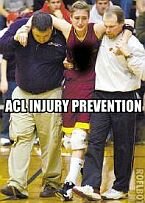Sciatica
One of the problems that many of our patients here at Capital Sports Injury Center say they have when first being seen is sciatica. This condition has become a catch all phrase for any type of leg pain that isnt caused by an injury to the leg itself. Before we describe how to treat this condition, it is necessary to clear up the confusion that many people have about sciatica and exactly what it is.
Sciatica is not an actual diagnosis. Sciatica refers to a group of symptoms that involve low back pain and pain that is also experienced down the back of the leg along the route the sciatic nerve. With most patients the symptoms are experienced on only one side. There is more than just pain involved. Patients will also experience numbness and muscle weakness in the leg. The pain can increase with prolonged periods of sitting or standing. Very often patients will say the pain is at its worst when attempting to stand after sitting or with increased extension of the low back.
These symptoms are usually caused by compression or some form of irritation to the nerve roots at the vertebral levels of L4, L5, S1, S2. These vertebral levels are located in the low back. L is short for lumbar which there are usually five vertebrae and S is short for sacrum, which is the fused bone at the bottom of the spine that forms two joints with the hip bones. The actual sciatic nerve itself can also be irritated. The sciatic nerve is the large nerve that runs through your buttocks and down the back of the leg to the knee where it splits into two nerves. The irritation at the nerve roots is usually caused by disc herniations. A disc herniation occurs when the gelatinous central portion of the vertebral disc pushes out against the fibrous ring-like structures of the outer disc. With enough pressure and time the disc can bulge out and put pressure on the nerve roots exiting the spinal column at that level.
Another possible cause for irritation of the nerve roots is spinal stenosis. Stenosis refers to a narrowing of the spinal canal. The spinal canal is the central opening within the spine through which the spinal cord passes. This means that there is less space for the spinal cord or nerve roots to travel through depending on where the stenosis is occurring. When this is the cause patients will usually experience pain on both sides because the spinal cord is being irritated. Some patients with osteoarthritis of the vertebrae will develop sciatica symptoms. This occurs because the vertebrae become deformed and dont align with each other correctly.
Finally, irritation at the nerve root can occur from a condition know as spondylolithesis. This is a condition where one vertebral body slips forward on top of the vertebral body below because of a fracture to a region on the vertebrae known as the pars interarticularis. This most often occurs in the spine at the levels of L4 and L5. Once the vertebral body has moved forward it can increase pressure on the spinal cord or nerve roots.
The condition that affects the sciatic nerve itself is known as piriformis syndrome. The piriformis muscle is an external rotator of the hip located deep to the gluteus maximus. The sciatic nerve runs right underneath this muscle in most people. Unfortunately, there are a small percentage of people who have the nerve pierce through the muscle. When this muscle begins to spasm it clamps down on the sciatic nerve and causes pain.
There are many reasons for people to develop the different causes of sciatica. In the US the most likely reason for developing the symptoms of sciatica deal with the amount of sitting we do. Humans are not designed to sit for the extended periods that most of us do. With the extended sitting many different muscles are not used, most importantly the core musculature (abs and obliques) and your glutes, the large muscles in your buttocks. The core musculature is used as stabilizers of the spine. With the weaker core musculature your spine is not protected as well during movement. This puts extra stress on the discs and can lead to herniations. The glutes are used to extend and externally rotate the hips. With weaker glutes your body is forced to compensate when moving your hips and pelvis with other muscles, specifically the piriformis that is much smaller and not designed to take on such large loads. These causes can be resolved fairly easy with the correct treatment.
As with most injuries there is no one magic pill. To treat sciatica you need to have multiple forms of treatment. Depending on the underlying cause the treatment can be very different. If you have a herniated disc treatment should include some form of chiropractic adjustment to help restore free movement in the joints surrounding the herniations. Traction usually helps to increase the distance between the vertebrae allowing the herniation to reduce. With a disc herniation the musculature around the spine usually go into spasm. To relieve this we suggest some form of soft tissue treatment, such as ART or Graston technique. Once the patient has begun to feel some relief strength training is necessary to help protect the spine. One such exercise that we usually use is plank hold. This exercise helps strengthen the abdominal muscles.
Both stenosis and spondylolithesis are much more difficult to treat. The cause cant be helped but you can prevent further deterioration with similar treatment to a herniation. Most of these causes of sciatica are fairly rare. The most common cause that we see is piriformis syndrome. To treat piriformis syndrome you need to work on the muscle itself. The best form of treatment is going to be ART or Graston technique. You should also work on stretching the muscle and strength train to reactivate your glutes. With your glutes working correctly the piriformis doesnt have the extra stress on it.
The best exercise to get your gluts firing again is a squat. The squat has to be performed correctly though. Too many people allow their knees to buckle inward or translate forward. Make sure to sit back and push your knees out wide like you are trying to do a split. You should notice that we never mention the use of pain killers or muscle relaxors. These may help reduce some of the pain but they never address the cause.
Patients who have these symptoms often are treated with only some of the above mentioned treatments. In our opinion all of them need to occur to truly stop sciatica. All of the treatments are offered at Capital Sports Injury Center. If you are tired of dealing with your low back and leg pain feel free to contact us at 301-622-9000 or by clicking here. As always stay healthy and keep training.
|
The Ultimate Nutritional Lie Detector Test LEARN MORE 
|
Kettlebell Rehab

Click Here
To See How Kettlebells will transform your body!
Vortex Rehab

Click Here
To See How This
Revolutionary Machine
Can Help You!
Partner / Support

Loans up to 3 months - fast cash advances for up to 90 days and up to $5,000!


















